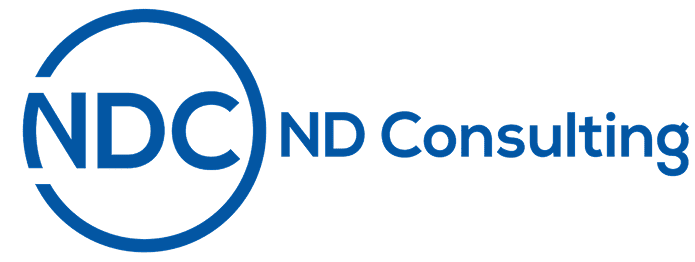The Yardi accounting system is designed to bring precision and clarity to real estate financial management. Its advanced automation, reporting, and integration capabilities help property managers handle complex financial workflows with confidence. Yet, despite its sophistication, even the most capable teams encounter errors that lead to lost time, inaccurate reports, and compliance issues.
Many of these issues aren’t caused by software limitations; they stem from how the system is configured or maintained. And many accounting inefficiencies are linked to software mismanagement. These mistakes often go unnoticed until financial audits or reconciliations reveal discrepancies that could have been avoided.
Let’s examine the most common missteps users make when working with the Yardi platform and how to avoid them before they impact your bottom line.
-
Overlooking the Initial Configuration
When implementing the Yardi accounting system, one of the biggest errors is rushing the setup process. Every property portfolio has its own structure: ownership entities, chart of accounts, lease types, and reporting needs. If these elements aren’t mapped correctly at the beginning, they create ripple effects across payables, receivables, and financial statements.
A poorly configured Yardi general ledger system can result in incorrect expense allocations, duplicate entries, or missing data during monthly closings. These issues can take hours to unravel. The key is a deliberate setup process where data sources are validated, reporting hierarchies are confirmed, and approval workflows are clearly defined.
Organizations that invest time in configuration see tangible results. Research by Deloitte found that companies with well-structured financial systems report faster close times and fewer post-closing adjustments.
-
Ignoring Regular Reconciliations
Reconciliation isn’t just an accounting task; it’s a safeguard. Yet many property management teams fail to reconcile accounts frequently within the Yardi accounting system. As a result, discrepancies between bank balances, tenant ledgers, and general ledger records accumulate unnoticed.
This often happens when accounting teams rely on automation but neglect verification. Even though Yardi automated accounting minimizes human error, it doesn’t replace the need for oversight. Setting a monthly reconciliation schedule for each property makes sure that any mistakes are caught before reports are finalized.
Another common issue is inconsistent reconciliation practices across entities. For portfolios spanning multiple ownership structures, consistency in frequency and process prevents long-term data misalignment.
-
Misusing or Ignoring Custom Financial Reports
Yardi’s strength lies in its financial reporting system, yet many firms rely solely on default templates. While built-in reports offer a good starting point, they may not fully capture your organization’s unique metrics or compliance needs.
Failing to customize reports often leads to incomplete visibility into property performance. For instance, missing sub-ledger data or unlinked transactions can distort profitability insights. The Yardi financial reporting system allows users to design tailored reports that track KPIs like NOI, lease expiration schedules, and forecasted cash flow.
-
Skipping Regular System Maintenance
The Yardi accounting system evolves through updates, patches, and module upgrades. Ignoring maintenance not only leads to performance issues but also increases security risks. Outdated configurations can disrupt automation scripts or cause reporting errors when modules become misaligned.
Routine system checks, such as validating user access permissions, reviewing audit logs, and making sure that integrations are functioning, keep your database secure and efficient. Neglecting these checks may cause downtime during critical financial cycles, especially during budget season or year-end reporting.
In large portfolios, having a dedicated administrator or partnering with a support team helps maintain stability and ensures compliance with both corporate and financial standards.
-
Not Using Automation to Its Full Potential
Yardi is known for its automation capabilities, particularly within payables, receivables, and recurring transactions. Yet, many teams continue to process tasks manually, leading to time loss and higher error rates.
A properly configured Yardi automated accounting environment can handle recurring journal entries, automatic payment approvals, and invoice routing with minimal human involvement. This not only saves time but also provides an auditable trail that simplifies external reviews.
Ignoring automation features wastes the system’s full potential and adds unnecessary pressure to accounting teams.
-
Failing to Train Users Effectively
Even the most powerful accounting system is only as good as the people using it. A major pitfall is assuming that initial training during implementation is enough.
Yardi frequently updates its modules and adds new functionalities. Without continued education, users rely on outdated processes and miss efficiency improvements. Regular workshops or refresher sessions help accounting teams understand new features, troubleshoot issues, and apply best practices.
Experienced firms often work with consultants who specialize in Yardi property accounting software training to keep their teams up to date. It’s an investment that reduces mistakes and increases productivity across the board.
-
Neglecting Budgeting and Forecasting Tools
Budgeting is a continuous process that guides financial strategy. The Yardi budgeting and forecasting tools offer deep analytical capabilities, from tracking historical performance to modeling future cash flow.
However, many users skip these features and continue using spreadsheets for planning. The risk? Disconnected data and version control issues. When budgets are maintained outside Yardi, the synchronization between projected and actual results breaks down.
Integrating your forecasts directly within Yardi keeps everything centralized, allowing automatic variance reports and real-time adjustments. This alignment helps managers react faster to changing market conditions and improves long-term planning accuracy.
-
Overcomplicating Permissions and Access Controls
Security and efficiency must balance each other. In some organizations, access controls within Yardi are set too broadly, giving users unnecessary permissions across multiple entities. Others go to the opposite extreme, limiting access so much that workflow bottlenecks develop.
The Yardi general ledger system allows for granular control over roles and responsibilities. Striking the right balance ensures accountability without obstructing productivity. Periodic audits of user roles can help identify redundant permissions or inactive accounts that could create compliance risks.
Data privacy and regulatory requirements make this an area worth constant review, especially when handling sensitive tenant or ownership information.
-
Not Using External Expertise When Needed
While internal teams manage daily operations, complex financial setups or system errors often require specialized knowledge. Working with certified consultants familiar with Yardi’s architecture can prevent costly misconfigurations.
Independent advisors and technical specialists provide targeted assistance with module integration, financial workflows, and report customization. They also help property managers stay compliant with the latest accounting standards and system updates.
Companies that use certified Yardi professionals are more likely to report fewer software-related accounting issues compared to those relying solely on internal teams. External insight can often identify issues that internal users overlook simply because they’re too close to the system.
Learning From Mistakes Before They Cost You
The Yardi accounting system is one of the most advanced financial management platforms in the property sector. But like any complex tool, its value depends on how it’s used and maintained. Overlooking configuration, neglecting maintenance, or underusing automation features can all translate to wasted resources and inaccurate financial reporting.

A disciplined approach, one rooted in structured reconciliation, customized reporting, and consistent user training keeps the system operating at its best. Regular audits, security reviews, and data validation are not optional steps; they’re crucial to protect financial integrity and support long-term business goals.
Conclusion
Avoiding these costly mistakes leads to financial accuracy, compliance, and strategic control. The Yardi accounting system offers the foundation for reliable and scalable real estate operations, but only when configured and maintained with discipline.
By properly using tools like the Yardi financial reporting system, Yardi general ledger system, and Yardi budgeting and forecasting modules, property managers can gain the clarity and consistency needed to make better decisions.
With careful setup, regular maintenance, and the right expertise, the Yardi accounting system becomes the financial backbone of a modern property management operation.





